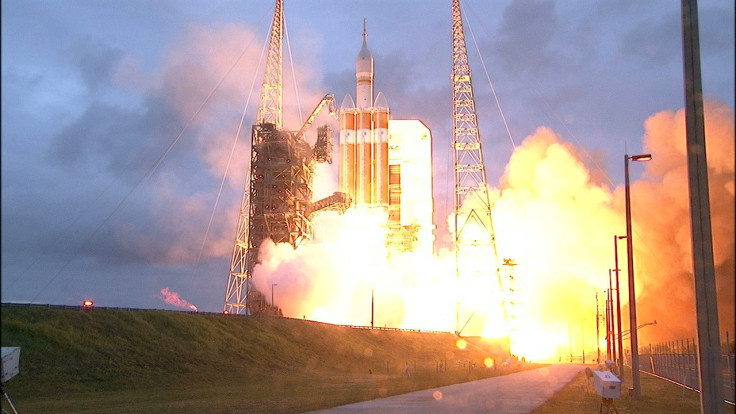NASA Orion Launch Is A Success, What's Next For NASA's Next Generation Spacecraft?

Update 11:30 a.m. EST: NASA confirmed that Orion splashed down in the Pacific Ocean. The U.S. Navy will help recover the spacecraft.
#Orion traveled 60,000 miles farther into space than any ship for humans has gone in 40 yrs!
— NASA (@NASA) December 5, 2014After a delay due to poor weather, NASA's Orion spacecraft had its first flight test, Exploration Flight Test 1. The next-generation spacecraft will be used in a manned mission to Mars, and Friday's flight will test Orion's heat shields during reentry.
Orion launched atop a United Launch Alliance Delta IV heavy rocket at approximately 7:05 a.m. EST from Space Launch Complex 37 at Cape Canaveral Air Force Station in Florida. The spacecraft will travel 3,600 miles into space, complete two orbits of Earth and will splash down in the Pacific Ocean at approximately 11:29 a.m. EST.
"That altitude will allow the spacecraft to return through the atmosphere at a speed of 20,000 mph (32,000 kph), which will generate temperatures near 4,000 degrees Fahrenheit (2,200 degrees Celsius) on Orion’s heat shield. Those temperatures -- about 80 percent as hot as Orion would experience returning from lunar orbit -- will provide the most challenging test currently possible," NASA explained in its flight overview. NASA will also test the spacecraft's parachute and separation events during the flight test.
At 7:07 a.m. EST, Orion and the Delta IV rocket entered maximum dynamic pressure, when launch forces are at their peak, before reaching supersonic speed. The first stage of the Delta IV rocket, which contains the common booster cores and the RS-68A engine, separated at 7:11 a.m. EST, and the second stage, containing the RL10 propulsion system, ignited at that time. The service module fairings, used as a structural support during launch, separated while the launch abort system was jettisoned at 7:12 a.m. EST.
The Orion spacecraft entered orbit at 7:23 a.m. EST after the second stage completed its first burn. At the time, the spacecraft was "about 560 miles by 120 miles above Earth." The second-stage reignition will push Orion to 3,600 miles above Earth.
You can watch the remainder of Orion's flight test via NASA's live stream below.
Broadcast live streaming video on Ustream© Copyright IBTimes 2024. All rights reserved.






















